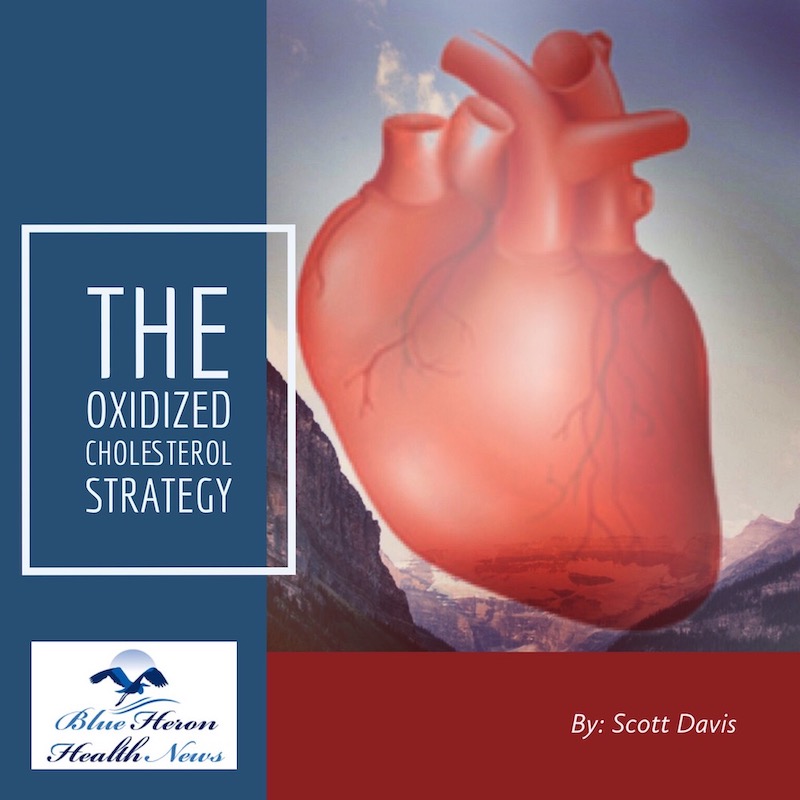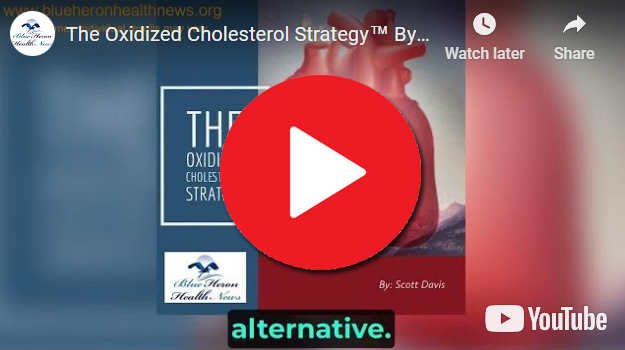
The Oxidized Cholesterol Strategy™ By Scott Davis The Oxidized Cholesterol Strategy is a well-researched program that reveals little known secret on how to tackle cholesterol plaque. This program will tell you step by step instructions on what you need to completely clean plaque buildup in your arteries so as to drop your cholesterol to healthy level.
How can polyunsaturated fats contribute to cholesterol oxidation?
Polyunsaturated fats (PUFAs) are a type of dietary fat found in various plant and animal foods. While PUFAs are generally considered heart-healthy due to their ability to lower LDL cholesterol and reduce the risk of cardiovascular disease, they are also susceptible to oxidation, which can contribute to cholesterol oxidation under certain conditions. Here’s a detailed explanation of how PUFAs can contribute to cholesterol oxidation:
1. Chemical Structure of Polyunsaturated Fats
Unsaturation and Susceptibility to Oxidation
- Double Bonds: PUFAs contain multiple double bonds in their chemical structure. These double bonds are more reactive than single bonds and can be easily attacked by reactive oxygen species (ROS), leading to lipid peroxidation.
- Examples of PUFAs: Common PUFAs include omega-3 fatty acids (e.g., alpha-linolenic acid, eicosapentaenoic acid, docosahexaenoic acid) and omega-6 fatty acids (e.g., linoleic acid, arachidonic acid).
2. Lipid Peroxidation Process
Initiation
- ROS Attack: ROS such as superoxide anion (O2-), hydroxyl radical (OH-), and hydrogen peroxide (H2O2) can attack the double bonds in PUFAs, abstracting hydrogen atoms and forming lipid radicals.
- Lipid Radicals: These lipid radicals react with molecular oxygen to form lipid peroxyl radicals, which are highly reactive and can propagate the peroxidation process.
Propagation
- Chain Reaction: Lipid peroxyl radicals can react with neighboring PUFAs, forming more lipid radicals and lipid hydroperoxides, perpetuating a chain reaction of lipid peroxidation.
- Formation of Malondialdehyde (MDA) and 4-Hydroxynonenal (HNE): These are common secondary products of lipid peroxidation that can form adducts with proteins, including apolipoproteins in LDL particles, altering their structure and function.
Termination
- Antioxidants: The chain reaction continues until it is terminated by antioxidants such as vitamin E, which donate electrons to neutralize lipid radicals, or by the formation of non-radical products.
3. Impact on LDL Cholesterol
Oxidation of LDL
- Incorporation into LDL: PUFAs are incorporated into the lipid core and the phospholipid monolayer of LDL particles. When PUFAs in LDL are oxidized, they lead to the formation of oxidized LDL (OxLDL).
- Modified Apolipoprotein B (ApoB): The products of lipid peroxidation, such as MDA and HNE, can form adducts with ApoB, altering the structure of LDL and making it more atherogenic.
4. Contributing Factors
Dietary Sources and Preparation
- PUFA-Rich Foods: Foods rich in PUFAs include fatty fish, nuts, seeds, and vegetable oils (e.g., soybean oil, corn oil, sunflower oil).
- Cooking Methods: High-temperature cooking methods such as frying can increase the oxidation of PUFAs in foods, leading to the consumption of oxidized lipids.
Storage Conditions
- Light and Heat Exposure: PUFAs are sensitive to light and heat, which can accelerate their oxidation. Proper storage conditions, such as keeping oils in dark, cool places, can minimize oxidation.
Endogenous Factors
- High Oxidative Stress: Conditions that increase oxidative stress in the body, such as inflammation, smoking, and certain diseases (e.g., diabetes, atherosclerosis), can enhance the oxidation of PUFAs in LDL.
5. Biological Implications of Oxidized LDL
Endothelial Dysfunction
- Adhesion Molecule Expression: OxLDL upregulates the expression of adhesion molecules on endothelial cells, promoting monocyte adhesion and infiltration into the arterial wall.
- Reduced Nitric Oxide (NO) Bioavailability: OxLDL reduces NO levels, impairing vasodilation and contributing to endothelial dysfunction.
Inflammation
- Pro-Inflammatory Cytokines: OxLDL stimulates the production of pro-inflammatory cytokines, perpetuating a cycle of chronic inflammation.
- Macrophage Activation: Macrophages take up OxLDL through scavenger receptors, leading to foam cell formation and atherosclerotic plaque development.
Atherosclerosis
- Plaque Formation: The accumulation of foam cells and the chronic inflammatory environment contribute to the formation of atherosclerotic plaques.
- Plaque Instability: OxLDL induces matrix metalloproteinase (MMP) production, weakening the fibrous cap of plaques and increasing the risk of rupture and thrombus formation.
6. Balancing PUFA Intake with Antioxidants
Importance of Antioxidants
- Dietary Antioxidants: Consuming antioxidants from fruits, vegetables, nuts, and whole grains can help neutralize ROS and prevent the oxidation of PUFAs.
- Supplemental Antioxidants: Supplements like vitamin E, vitamin C, and coenzyme Q10 can enhance antioxidant defenses and protect against lipid peroxidation.
Dietary Recommendations
- Moderation and Balance: While PUFAs have health benefits, it is important to consume them in balance with antioxidants to prevent oxidation. Include a variety of fat sources in the diet, emphasizing those that are less prone to oxidation.
- Safe Cooking Practices: Use cooking methods that minimize oxidation, such as steaming, boiling, and baking at lower temperatures. Avoid excessive frying and use oils with higher oxidative stability for high-temperature cooking.
Conclusion
Polyunsaturated fats, while beneficial for lowering LDL cholesterol and reducing cardiovascular risk, are susceptible to oxidation due to their multiple double bonds. Oxidized PUFAs contribute to the formation of oxidized LDL, which plays a critical role in the development of atherosclerosis. Factors such as high oxidative stress, improper storage, and cooking methods can exacerbate PUFA oxidation. To mitigate these risks, it is important to balance PUFA intake with adequate antioxidants, adopt safe cooking practices, and maintain a diet rich in diverse, nutrient-dense foods. This approach helps harness the benefits of PUFAs while minimizing the potential for cholesterol oxidation and its associated cardiovascular risks.
The Oxidized Cholesterol Strategy™ By Scott Davis The Oxidized Cholesterol Strategy is a well-researched program that reveals little known secret on how to tackle cholesterol plaque. This program will tell you step by step instructions on what you need to completely clean plaque buildup in your arteries so as to drop your cholesterol to healthy level.
